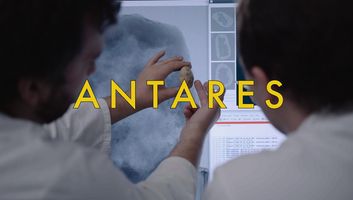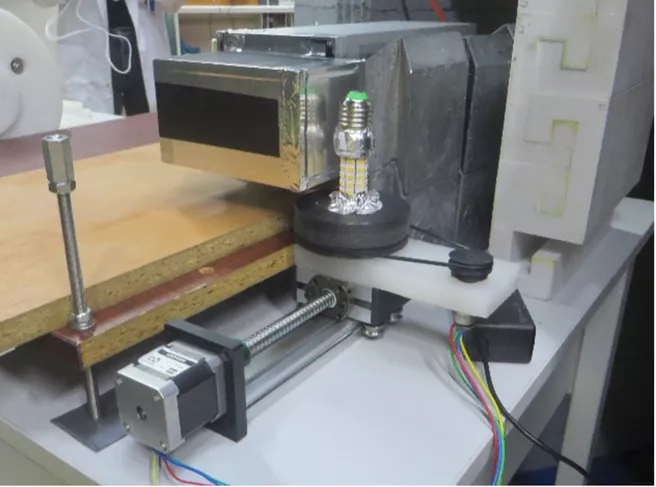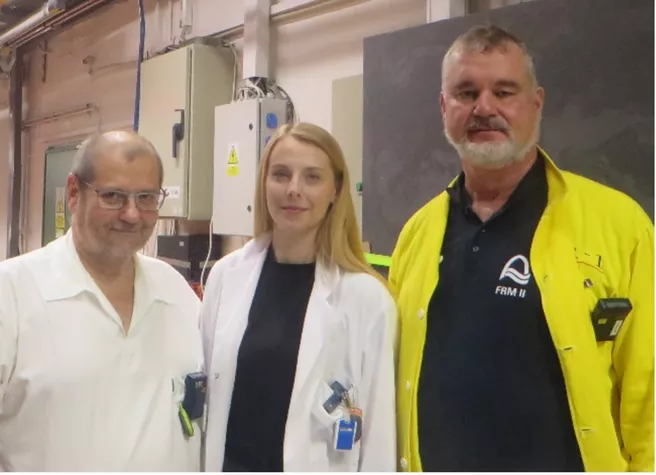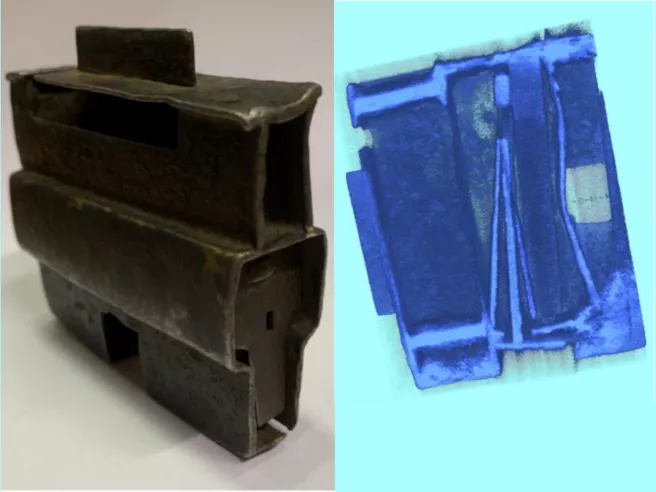Portable, sensitive and cheap
In the end, the result was a portable neutron detector that could be used at any neutron source. The detector gets its high sensitivity from the built-in astronomy camera. Such cameras for amateur astronomers are getting cheaper and cheaper. The complete detector thus only cost around €1000, many thousands of euros less than the usual neutron detectors at the FRM II.
Due to its high sensitivity, the detector also delivers images at reactors with very low power, such as the VR-1 near-zero reactor – but with certain limitations. Matoušková needed twelve hours for her world’s first neutron tomography at 500 watts. “For cutting-edge research, a high-power reactor like the FRM II remains indispensable,” explains Schillinger, “but it was impressive to see that we could take an image at all at such low power.” Mathematically, the same image could be taken at FRM II within a few seconds. But since ANTARES records about a hundred times more neutrons and more angular positions for a detailed and noise-free 3-D-image, researchers would only need about half an hour for this.
Detector is a mini version of ANTARES
The detector Jana Matoušková built with the help of Burkhard Schillinger is a scaled-down copy of the neutron radiography system at FRM II. “Put simply, with the help of neutrons you can often see everything that is not visible with X-rays,” says Schillinger, explaining the principle of neutron radiography and tomography, which is operated at the MLZ on the ANTARES and NECTAR instruments. The video on the right explains exactly how it works.
And Jana Matoušková showed that it really does work in handbag format with her first tomography of a Tibetan padlock. “I was really surprised how well you could make out details despite the somewhat noisy images,” admits Burkhard Schillinger.



